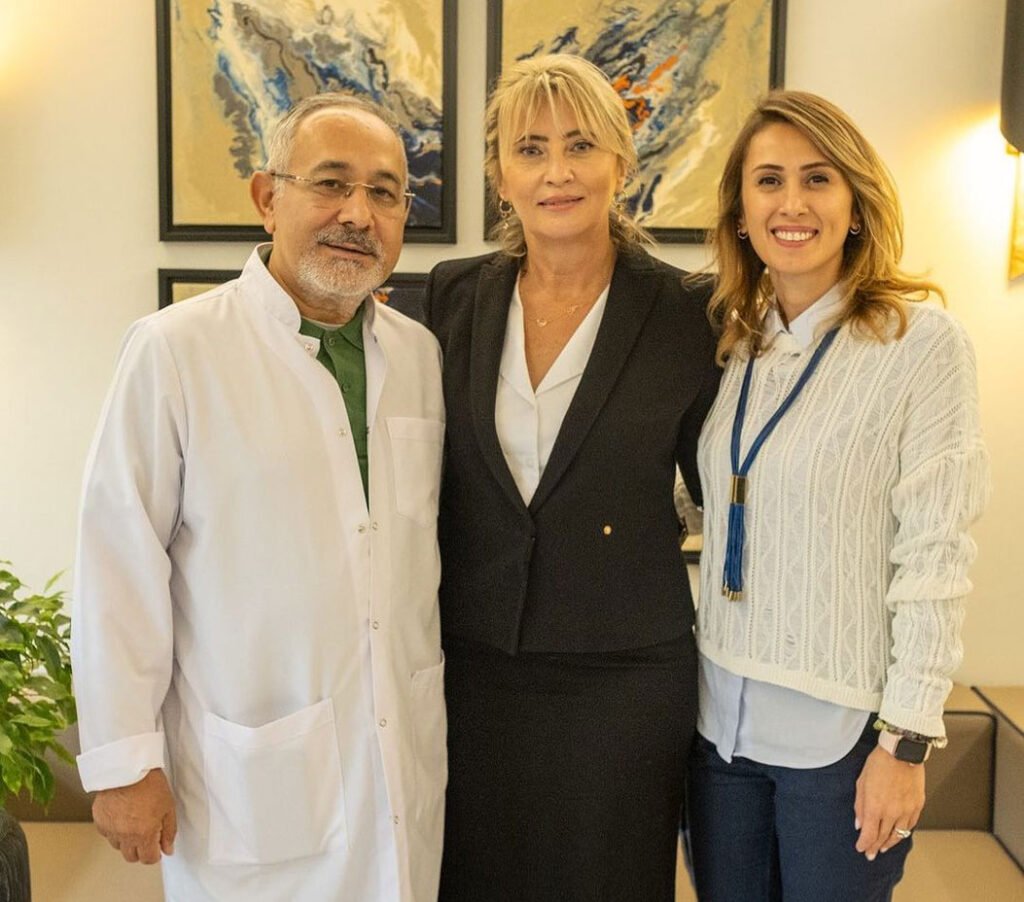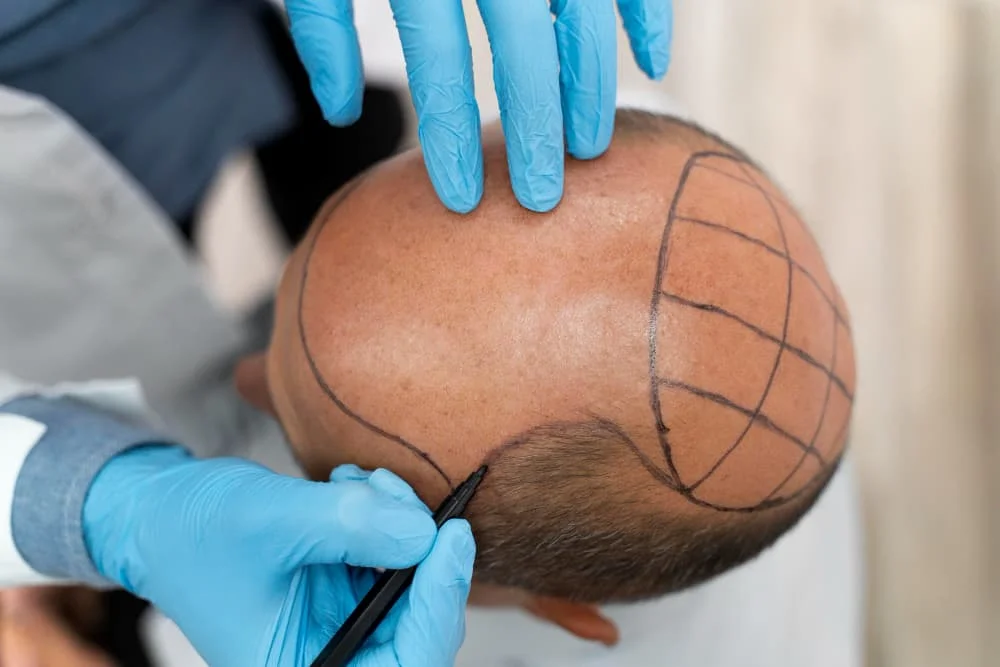
Hair transplantation has become a go-to solution for individuals struggling with hair loss, offering not only a fuller head of hair but also a boost in confidence. However, one key question often arises: how long does hair transplant last? If you’re considering this transformative procedure, it’s only natural to want assurance that your investment will stand the test of time.
This guide aims to provide clarity on the longevity of hair transplants, setting realistic expectations for the future. We’ll examine the factors that influence the durability of the results and offer tips for maintaining your newly restored hair. At Istanbul Hair Institute, our goal is to deliver not just immediate improvements but also natural, long-lasting outcomes. With our expert team and proven techniques, you can trust that your hair restoration journey is in capable hands.
Let’s dive into the realities of hair transplants and uncover how you can enjoy the benefits for years to come.
Understanding the Hair Transplant Process and Timeline
A hair transplant is a meticulous procedure where healthy hair follicles are transplanted from a donor area, usually the back and sides of your head, to areas affected by hair loss. These transplanted follicles adapt to their new location, eventually growing healthy, natural hair.
The Journey to New Hair
After undergoing a hair transplant, your scalp will need time to heal. It’s natural to wonder, “How long does hair transplant last?” While the results are generally permanent, it’s essential to understand that both the transplanted hair and sometimes even the existing hair around the transplant site may go through a temporary shedding phase known as shock loss. This is completely normal and typically occurs within the first few weeks after the procedure. Far from being a setback, it’s a sign that the follicles are resetting and preparing for new growth.
Hair Growth Cycle: The Foundation of Hair Transplant Results
To appreciate the timeline of results, it helps to understand the natural stages of the hair growth cycle:
- Anagen (Growth Phase): The active growth stage, lasting several years, during which hair grows steadily.
- Catagen (Transitional Phase): A brief period where hair growth slows, and the follicle begins to shrink.
- Telogen (Resting Phase): A resting stage where the hair eventually sheds to make room for new growth.
Post-Transplant Timeline: What to Expect
- Weeks 1-4: The healing phase. Transplanted hair may shed due to shock loss, a normal and temporary occurrence.
- Months 1-3: The follicles enter the resting (telogen) phase, during which minimal to no visible growth occurs. This “dormant period” can be frustrating but is entirely normal.
- Months 3-6: New hair starts to grow. Initially fine and soft, it will gradually thicken over time.
- Months 6-12: The hair growth continues, becoming fuller and more natural-looking.
- Months 12-18: By this stage, most patients will see their final results, with fully integrated and mature transplanted hair.
Important Note:
The timeline outlined above serves as a general guide. Your experience may vary depending on factors like your overall health, the aftercare you follow, and the hair transplant technique used. Patience is key achieving the full benefits of your transplant takes time.

How Long Do Hair Transplant Results Typically Last?
For anyone considering a hair transplant, the question “how long do hair transplants last?” is paramount. The good news is that hair transplant results are generally considered permanent. This is because the transplanted hair follicles are taken from areas of the scalp that are genetically resistant to hair loss—typically the back and sides of the head. Once transplanted to areas experiencing thinning or balding, these follicles retain their resistance to the hormones that cause hair loss, ensuring long-lasting results.
How long does hair transplant last on average?
On average, a hair transplant is designed to last a lifetime. The transplanted follicles are not susceptible to the same balding process as the original hair in the recipient area. While individual results can vary, the vast majority of patients enjoy their new hair for decades.
How long will a hair transplant last for most people?
For most individuals, a hair transplant provides a permanent solution to hair loss. The transplanted hair continues to grow naturally for the rest of their lives, mimicking the behavior of the donor hair. While some age-related thinning may occur, it is usually minimal in the transplanted areas.
How long do hair transplants last in the best cases?
In ideal circumstances—when performed by an experienced surgeon on a healthy patient with a robust donor area and proper adherence to aftercare instructions—a hair transplant can last a lifetime. In such cases, the transplanted hair maintains its density and coverage, providing a long-term solution to hair loss.
Key Takeaway:
While transplanted hair is considered permanent, factors like aging, overall health, and hair care practices can influence the appearance of your hair over time.
Factors That Can Affect the Longevity of Your Hair Transplant
Although hair transplant results are generally considered permanent, many people still ask, “How long does hair transplant last?” The answer depends on several factors that can influence their durability and overall appearance over time. By understanding these factors, you can set realistic expectations and take proactive steps to maximize the longevity of your results.
Key Factors Influencing Longevity:
- Surgeon’s Skill and Experience:
The success and longevity of your hair transplant largely depend on the expertise of your surgeon. A highly skilled surgeon ensures precise harvesting and implantation of grafts, leading to natural-looking results and optimal graft survival. Clinics like Istanbul Hair Institute prioritize advanced techniques to maximize outcomes and longevity. - Donor Area Quality:
The availability and quality of donor hair play a crucial role. Healthy, robust follicles in the donor area ensure a higher survival rate after transplantation. A limited or weak donor area may affect the density and longevity of the results. - Type and Progression of Hair Loss:
While transplanted hair is resistant to further balding, non-transplanted areas may continue to thin over time due to genetic factors or other conditions. This progression can impact the overall appearance and may require additional procedures later on. - Age and Genetics:
Your age and genetic predisposition to hair loss significantly influence long-term results. Younger patients with ongoing hair loss may require future treatments to address changes as their natural hairline evolves. - Overall Health and Lifestyle:
A healthy lifestyle supports the longevity of your transplant. A balanced diet, regular exercise, and stress management all contribute to hair health. Conversely, smoking and poor circulation can hinder graft survival and long-term growth. - Post-Transplant Hair Care:
Proper aftercare is vital for the healing process and graft survival. Following your surgeon’s instructions for washing, styling, and protecting your hair ensures the best results. Neglecting aftercare can compromise the success of your transplant.
Important Note:
While these factors may influence the longevity of your results, a well-executed hair transplant performed by a skilled surgeon offers a lasting solution to hair loss in most cases. With proper care and attention, you can enjoy natural-looking, enduring results for years to come.

Long-Term Expectations: What Happens Years After a Hair Transplant?
A hair transplant is a significant investment in both your appearance and confidence. Understanding what to expect in the years following the procedure is essential to set realistic expectations. While the transplanted hair is permanent, factors like aging and ongoing hair loss in untreated areas may influence your overall look over time.
What Happens 5 Years After a Hair Transplant?
Five years post-transplant, you’ll be enjoying the full results of your procedure. The transplanted hair will have fully matured, blending seamlessly with your natural hairline. By this time, increased density and a natural appearance should be evident, and you’ll be able to style your hair however you like. The transplanted follicles will continue to grow just like your original hair.
What Happens 10 Years After a Hair Transplant?
Ten years later, the transplanted hair should remain strong and healthy, maintaining its resistance to balding. However, natural aging may lead to subtle changes such as slight thinning or graying, which vary from person to person based on genetics and overall health. Despite these changes, your transplanted hair will still provide significant improvement compared to pre-transplant conditions.
What Happens 20 Years After a Hair Transplant?
Twenty years after your hair transplant, the results should still be visible, with transplanted hair continuing to grow. However, if you are genetically predisposed to advanced hair loss, non-transplanted areas may show more noticeable thinning by this point. For some, a touch-up or second transplant might be considered to restore balance and maintain a natural look.
Key Takeaway:
A hair transplant provides a lasting solution to hair loss, often prompting the question, “How long does hair transplant last?” While the transplanted hair is permanent, it’s important to remember that the procedure doesn’t halt the aging process or prevent future hair thinning in untreated areas. Regular follow-ups with your surgeon can help you monitor your results and address any concerns. With realistic expectations and proper care, your hair transplant can deliver confidence and satisfaction for decades.

Why Choose Istanbul Hair Institute for Long-Lasting Hair Transplant Results?
Selecting the right clinic is one of the most critical decisions when pursuing a hair transplant. At Istanbul Hair Institute, we excel in delivering long-lasting, natural-looking results that exceed expectations. Our reputation as a leader in hair restoration stems from a commitment to patient satisfaction and world-class outcomes.
Why We Stand Out:
- Expert Surgeons: Our highly experienced surgeons combine technical expertise with a deep understanding of the art and science of hair restoration.
- Advanced Techniques: Utilizing cutting-edge methods like Direct Hair Implantation (DHI) ensures precise graft placement, minimal scarring, and enhanced hair growth.
- Tailored Procedures: We adopt a personalized approach, customizing every procedure to meet the unique needs and goals of our patients.
- Focus on Confidence: At Istanbul Hair Institute, we aim to do more than restore hair—we strive to restore confidence and enhance quality of life.
What We Offer:
- Minimally invasive procedures for faster recovery.
- State-of-the-art facilities and technology.
- Comprehensive aftercare support to ensure optimal results.
Take the first step toward a fuller head of hair and renewed confidence. Contact Istanbul Hair Institute today to schedule your free consultation and learn how we can help you achieve the natural, long-lasting results you’ve been dreaming of.
Recent Posts
-
 Does Creatine Cause Hair Loss? Separating Fact from Fiction21 Jan 2025
Does Creatine Cause Hair Loss? Separating Fact from Fiction21 Jan 2025 -
 How Long Does Hair Transplant Last? A Comprehensive Guide to Long-Term Results15 Jan 2025
How Long Does Hair Transplant Last? A Comprehensive Guide to Long-Term Results15 Jan 2025 -
 Hair Loss After Hair Transplantation: Is It Normal and What to Do?13 Jan 2025
Hair Loss After Hair Transplantation: Is It Normal and What to Do?13 Jan 2025 -
 Donor Area in Hair Transplant: All You Need to Know - Istanbul Hair Institute06 Jan 2025
Donor Area in Hair Transplant: All You Need to Know - Istanbul Hair Institute06 Jan 2025 -
 The Connection Between Oral Health and Overall Health03 Jan 2025
The Connection Between Oral Health and Overall Health03 Jan 2025

